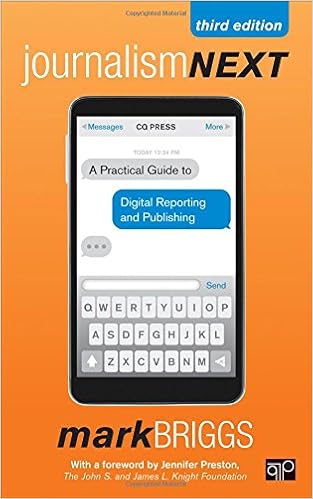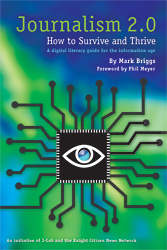Embracing technology and using the power of the people will make newsgathering much more efficient. With it, you can jumpstart the process of finding sources, experts, new angles and instant (and constant) feedback.
This is a concept I’m exapnding on for my new book. And I need your help.
What are some recent examples of crowdsourcing, open source reporting or pro-am journalism that have really worked? Here is how I’m classifying each concept:
Crowdsourcing: Focuses that community power on a specific project and demonstrates how a group of committed individuals can outperform a small group of experienced (and paid) professionals. Examples include Talking Points Memo and the U.S. Attorneys scandal, Huffington Post and the stimulus package and the Fort Meyrs Press with several examples.
Open source reporting: Uses transparency in reporting in order to provide a benefit to your audience and possibly benefit from your audience. Examples include link journalism, beatblogging and the email reader networks first pioneered in Spokane, Wash.
Pro-am journalism: Allows the audience to publish directly to the same platform, or Web site, that professional journalists use to publish their news. Examples include NeighborsGo.com by the Dallas Morning News, TribLocal by the Chicago Tribune and MyCommunityNow by the Milwaukee Journal-Sentinel.
To meet the increasing demands of editors and audiences, reporters need to become as efficient as possible. Through the use of technology and a more open approach to gathering and presenting information, reporters, photographers and editors can leverage their existing talent for newsgathering and news judgment. And, simultaneously, they can build bridges to their audiences and increase their social capital.
Monica Guzman, who was hired as the first full-time blogger and social media editor for the Seattle Post-Intelligencer, summed up the spirit of collaboration perfectly last week in a post to the Online-News listserv:
So let me know in the comments, by email or direct message on Twitter about some other projects or Web sites doing interesting work with crowdsourcing and journalism. And thanks, in advance, for helping me use crowdsourcing to learn more about crowdsourcing.
 Mark Briggs
Mark Briggs  Posted in
Posted in 





The law enforcement section in Tucson, Ariz. has produced raw movie footage with the camera law enforcement officer Joel Mann was putting on when he brutally pummeled a woman scholar who was strolling innocuously just off the campus of your College of Arizona.